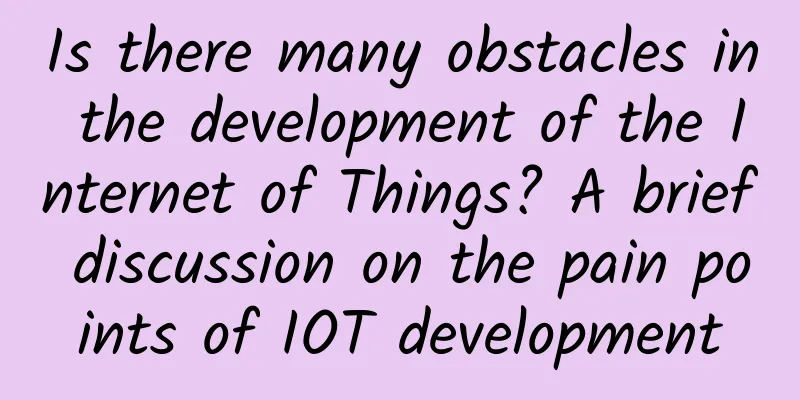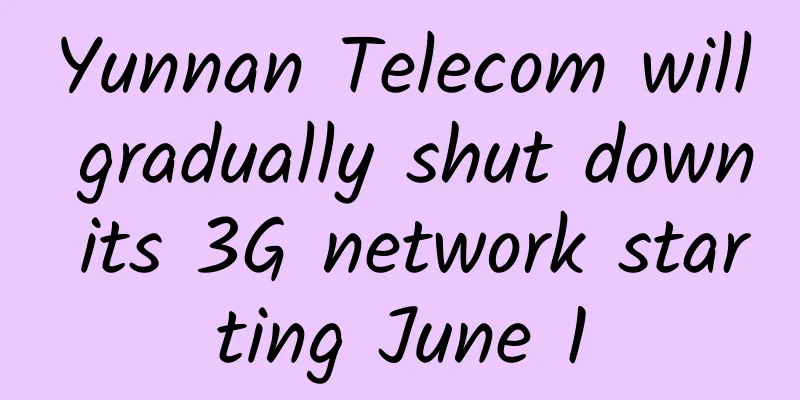Is there many obstacles in the development of the Internet of Things? A brief discussion on the pain points of IOT development

|
In modern society, the Internet of Things, which is always connected, has broken down the barriers to innovation and communication. Living in a technological age, today's technology enables us to communicate without interruption and without boundaries. Gartner predicts that there will be 8.4 billion connected devices worldwide by 2017, including consumer products such as smart TVs and in-car entertainment systems, and industrial applications that can predict factory maintenance needs or estimate the most efficient way to distribute electricity in power plants. These applications can connect and interact on the same platform, bringing opportunities for enterprises to generate additional revenue.
However, especially from an industrial perspective, the adoption of these new platforms has been slow due to the difficulty of implementing connectivity in a comprehensive manner across a wide range of access points, such as customers, partners, and employees around the world. At the same time, cloud-based mobile devices can optimize connectivity to each access point, and companies tend to prioritize this development, adding another layer of complexity to the adoption of new platforms. Take the energy industry as an example. Simply put, the infrastructure of too many organizations in this industry is old and outdated. In many countries, there is an urgent need for digital upgrades in the energy industry. In fact, the current grid infrastructure in many areas is outdated. It is time for utilities to replace "antique" assets with smart operations that can achieve digital communications. It is time for the energy industry to regard data as its new currency. The bigger challenge is that the various technology options supporting the Internet of Things are still relatively fragmented, with different standards and involving different applications, making the concept of the Internet of Things seem confusing. Unlike network interconnection, it is more like an archipelago with many islands. In fact, Forrester once said that this year, in order to support the company's Internet of Things devices, its design team needs to find up to 19 wireless connection options and protocols, and the enterprise needs to spend a lot of effort to introduce them. For example, suppose you are going to a meeting on your calendar. You will use the GPS on your phone to navigate to the meeting place, but the current parking application will not tell you that it actually takes 20 minutes to drive to the meeting place, and you have to park your car in a parking lot farther away, so you must leave now. Although Google Maps knows the driving time, it cannot tell you the parking situation, so users need applications other than Google Maps. Taking industry as an example, returning to the energy example discussed earlier, new technologies (including sensors and digital control systems) use real-time data to keep power plants running smoothly and efficiently, achieving higher production capacity while providing valuable forward-looking predictions that make operations more reliable and efficient. Technology makes different applications synchronized, and the market demand for multiple applications will begin to change. With the popularization of cloud-based M2M device management systems, we believe that the demand for multiple applications has begun to decrease. Therefore, mobile network operators are currently willing to give up becoming the main service contractor and supplier, and instead choose to cooperate with M2M/IoT platform suppliers and third-party system integrators to realize their M2M/IoT strategies. The growth brought by the Internet of Things will have an impact on various industries in different countries. For example, the automotive industry no longer has to consider location factors and has the opportunity to provide a borderless and unrestricted connected car experience. Transportation and logistics companies will be able to achieve new cost efficiencies in their business. Borderless connectivity allows airline crews to stay connected to the corporate network regardless of their location. Connectivity between aircraft can help diagnose problems and service, potentially identifying aircraft issues before they become operational problems. The Internet of Things and mobile devices are creating an integrated digital technology platform that will ultimately create a “one-stop shop” for consumers and businesses. While we still face challenges, it is clear that we are moving toward digital platforms that enable this convergence for consumers and businesses around the world in developed and emerging markets. |
>>: Yunfan Accelerator CEO Tong Yongyue resigns, founder Wang Xijie takes over and sets sail again
Recommend
5G accelerates cloud-network integration
What is cloud computing? Different companies have...
Why are operators trying so hard to promote 5G packages?
[[426961]] In July last year, an article on Xinhu...
What are the characteristics of 5G? A few keywords will help you understand
5G (fifth-generation mobile communication technol...
Building a digital foundation: a vast expedition to reshape future education
In the past two years, with the rise of big model...
Lisa Host: Los Angeles Cera Data Center CN2 High Defense VPS monthly payment starts at 40 yuan, support 2 yuan/day trial
I shared information about Lisa hosts in the midd...
IPv6 brings huge opportunities for managed service providers
For MSPs, helping customers transition to IPv6 co...
With another 600,000 base stations added in 2021, will the number of 5G users increase dramatically?
As we all know, my country's operators have b...
“Hotel chains” also have “five-star” Wi-Fi! How did Lavande Hotels do it?
Hotel Wi-Fi ≈ Slow speed and insecurity? This pro...
Smart building wiring, how to make a wise choice?
Smart building networks have many extremely speci...
New infrastructure defines the new connotation of data center
At this year's National People's Congress...
Nexril: $9/quarter KVM-1GB/15G SSD/1TB/Dallas data center
Nexril is a site under Corex Solutions, LLC. It w...
[Christmas] ColoCrossing 35% off: $2.57/month-1GB/25G SSD/20TB@1Gbps/Los Angeles & New York Data Center
I just shared the news of ColoCrossing's 25% ...
Vinton Cerf, the 'Father of the Internet', Infected with Coronavirus
[[320474]] According to the latest news from fore...
The Experience Economy is in Full Swing: Aruba Drives the Intelligent Digital Workplace
Under the wave of mobility and digitalization, th...









